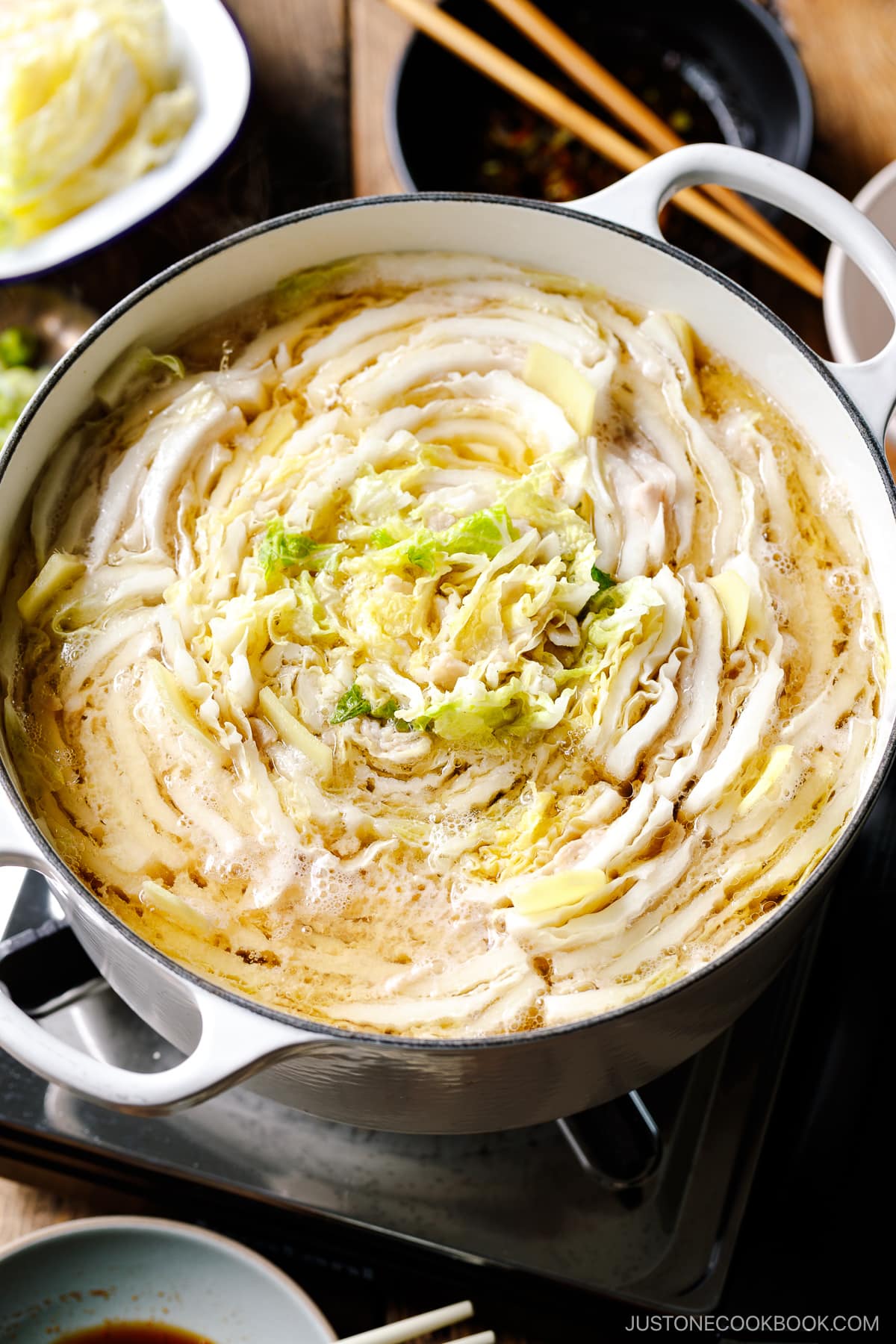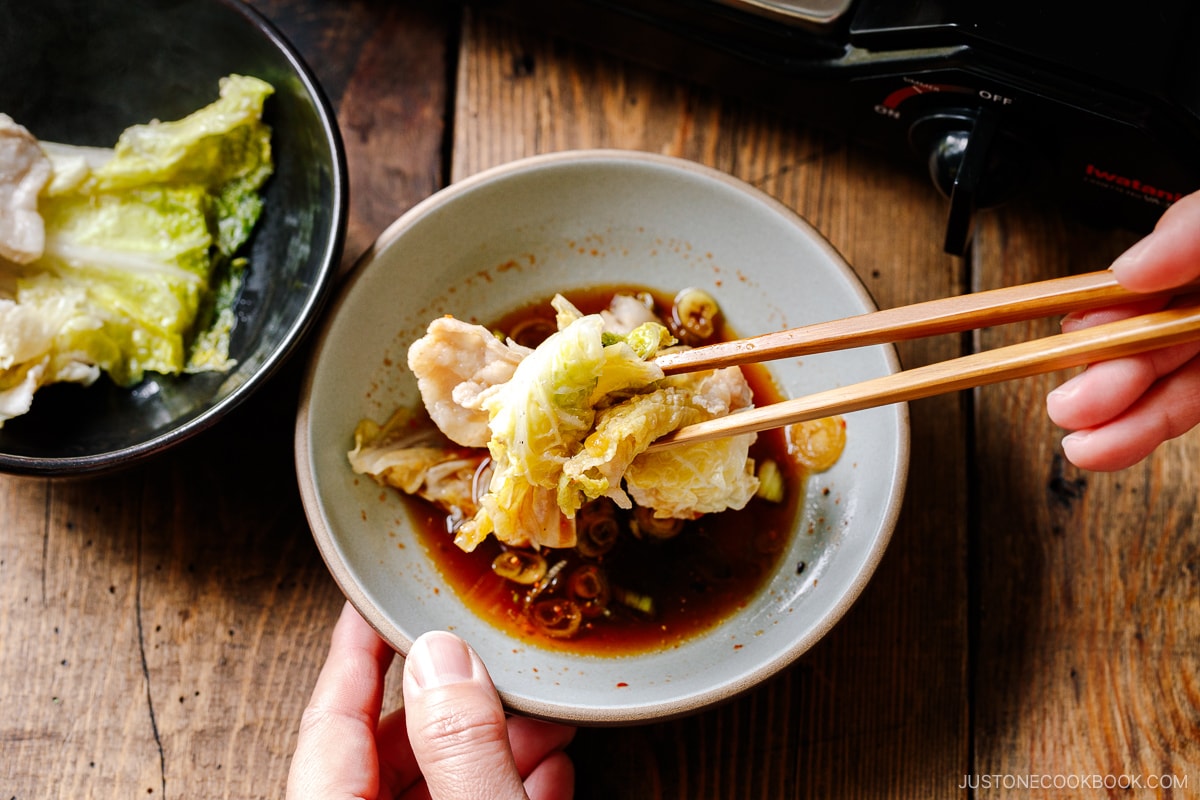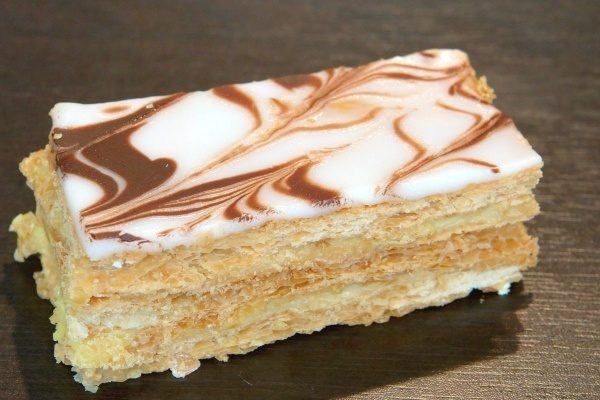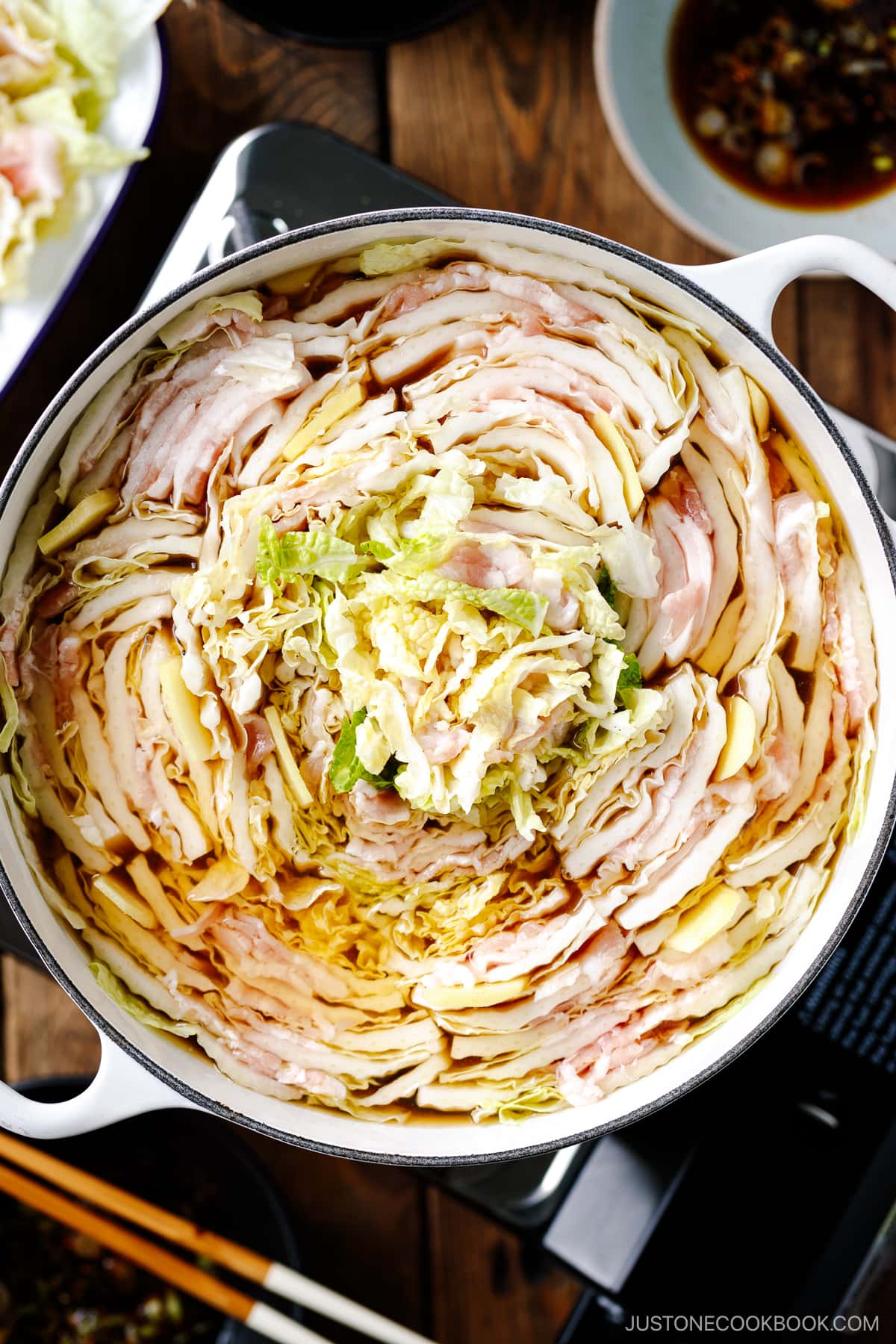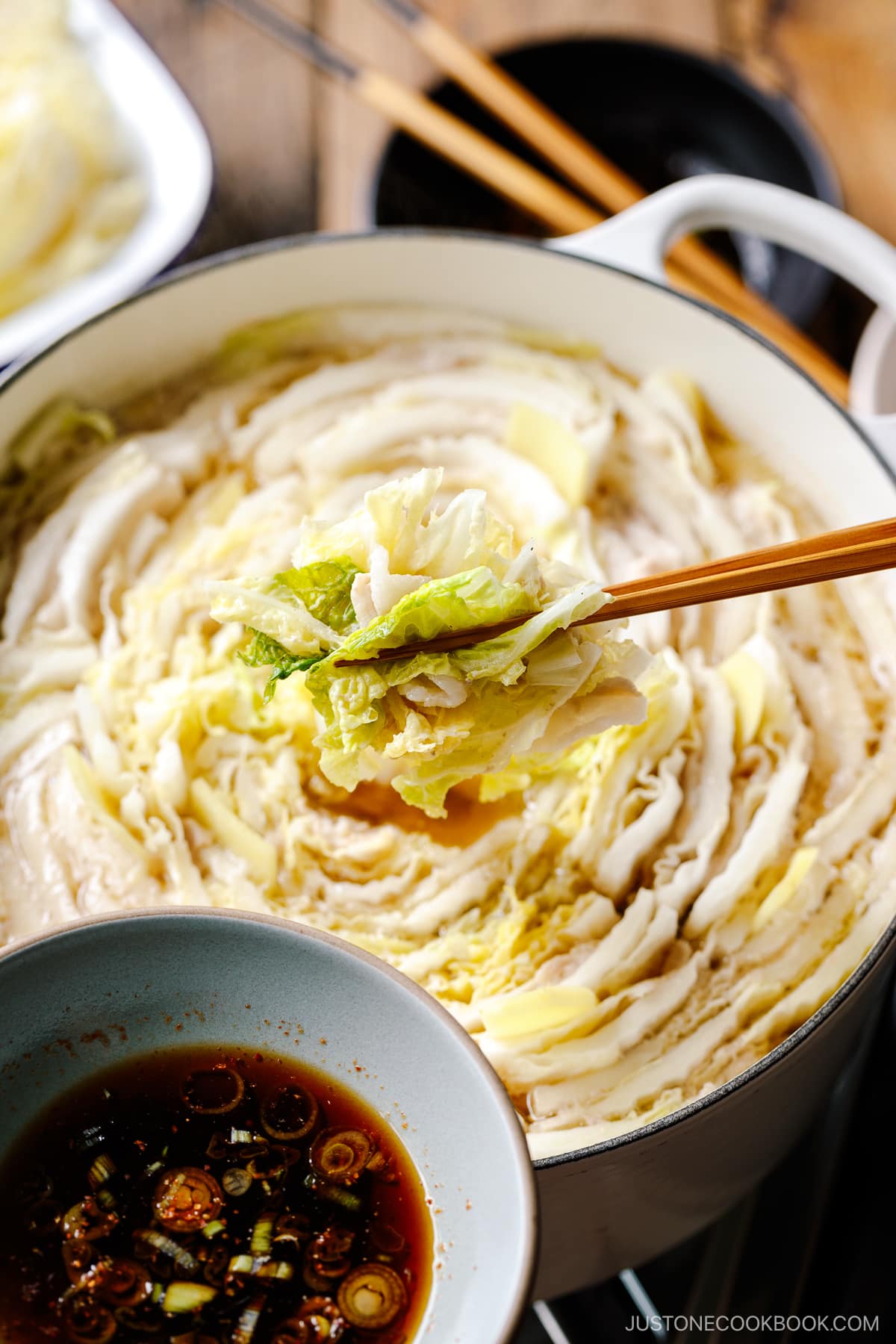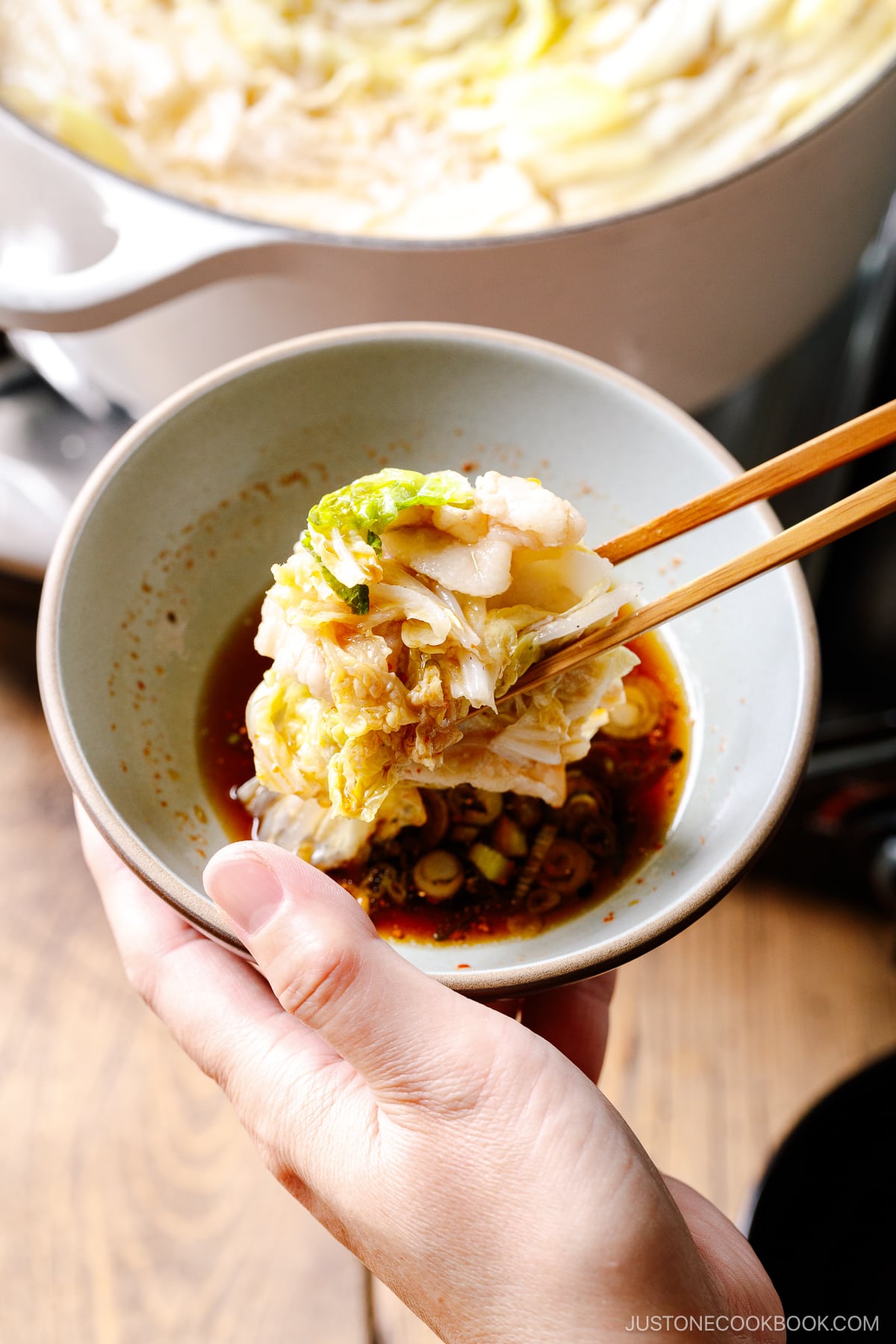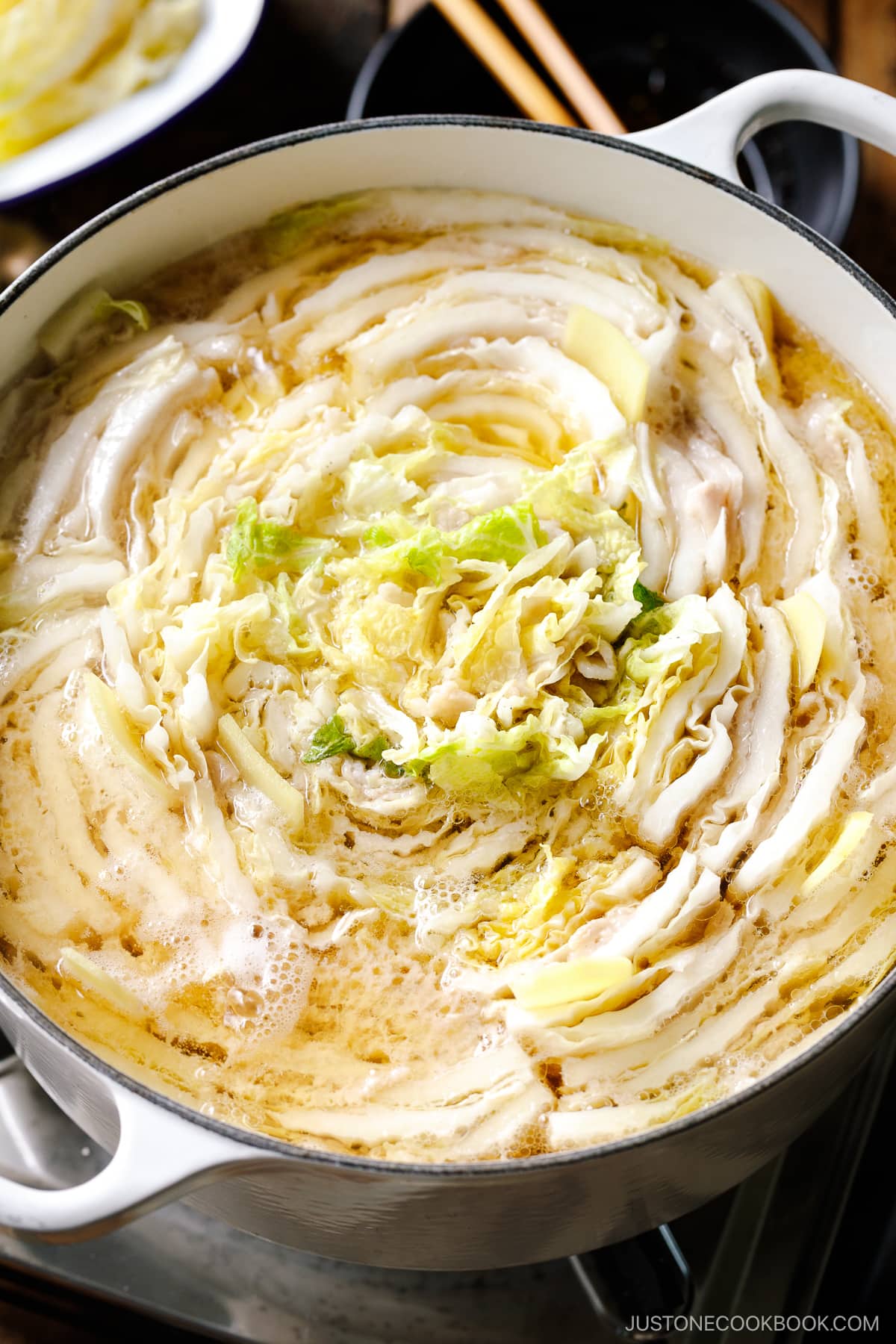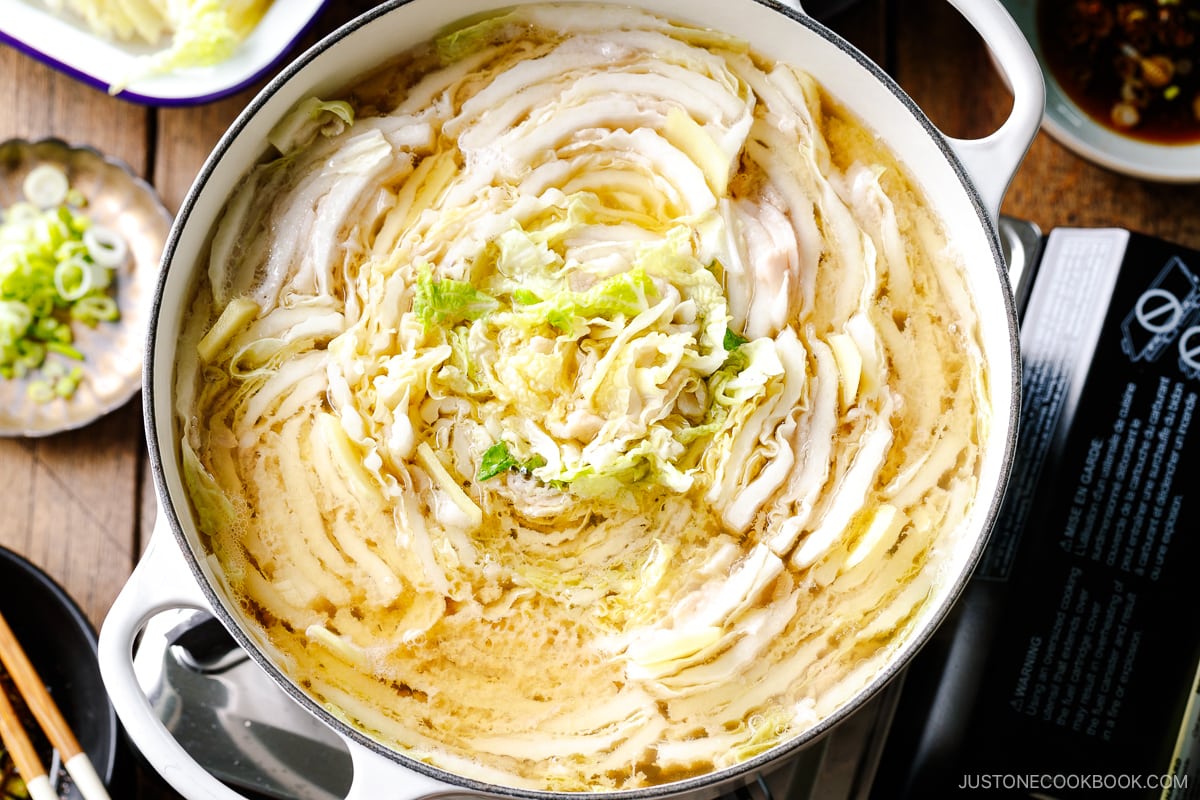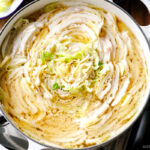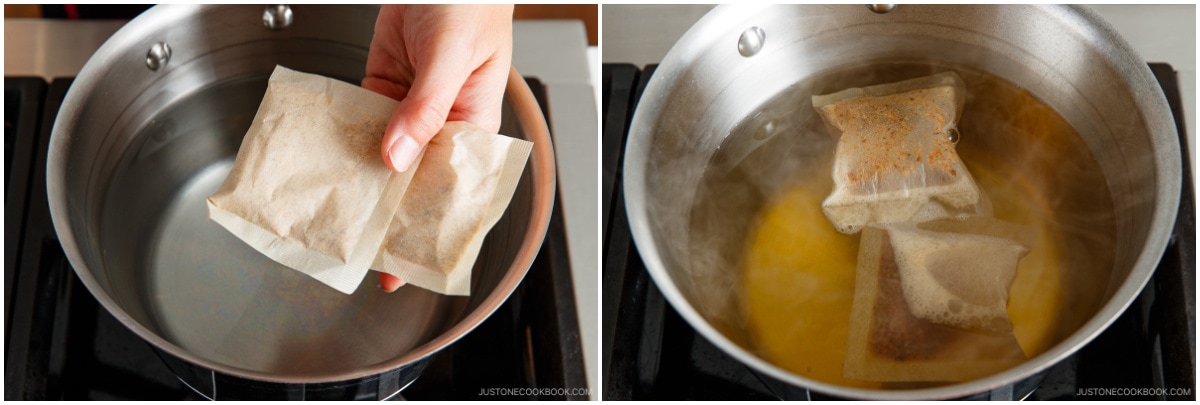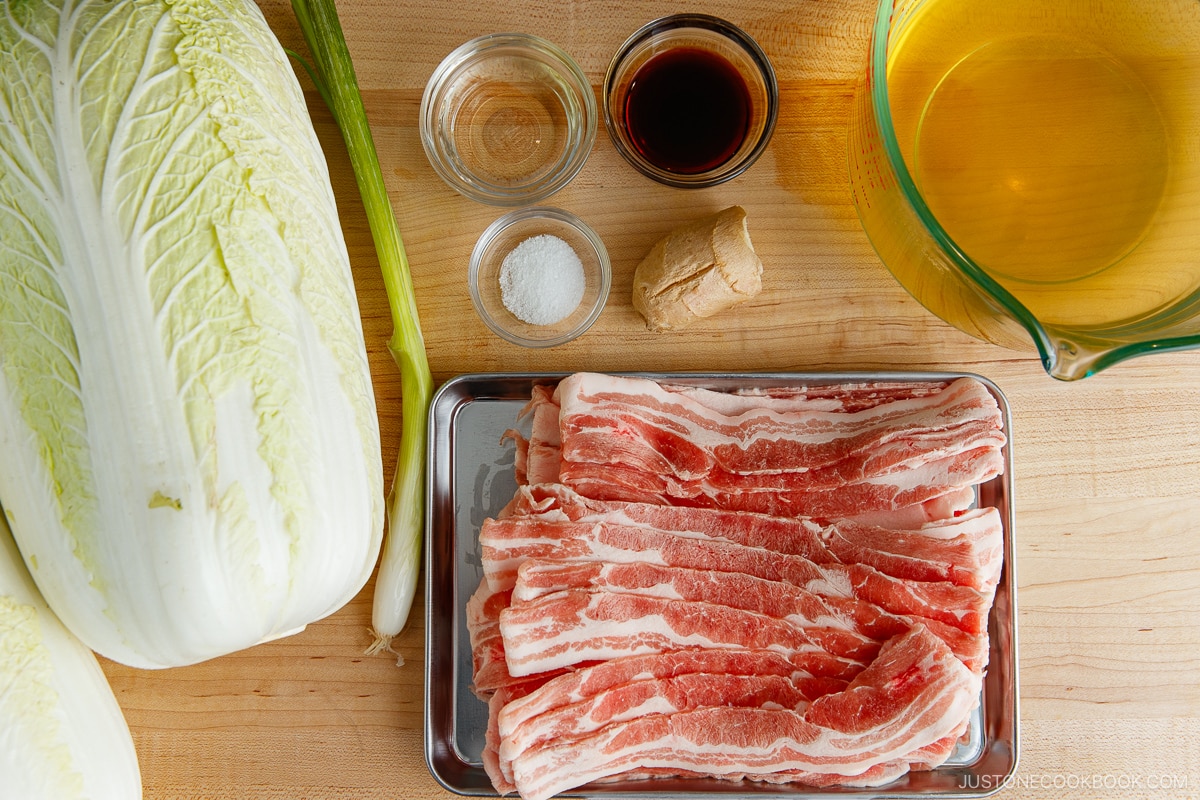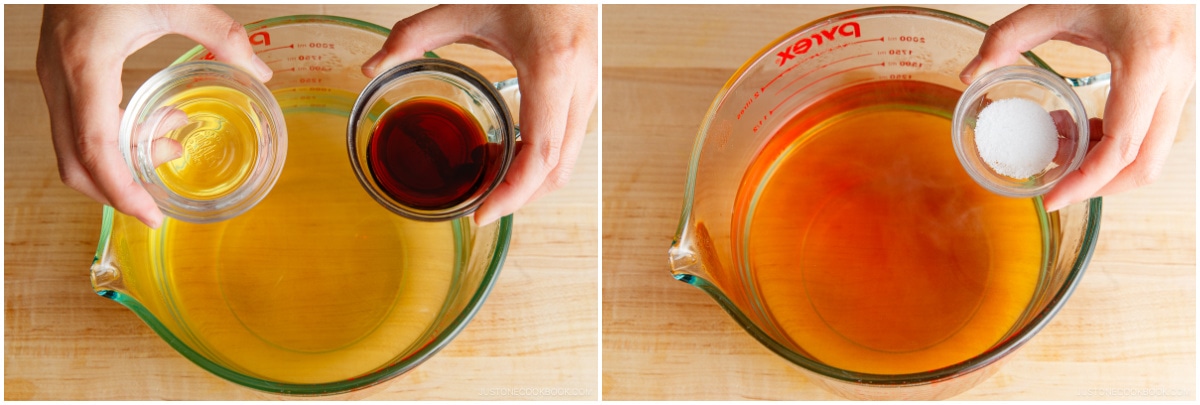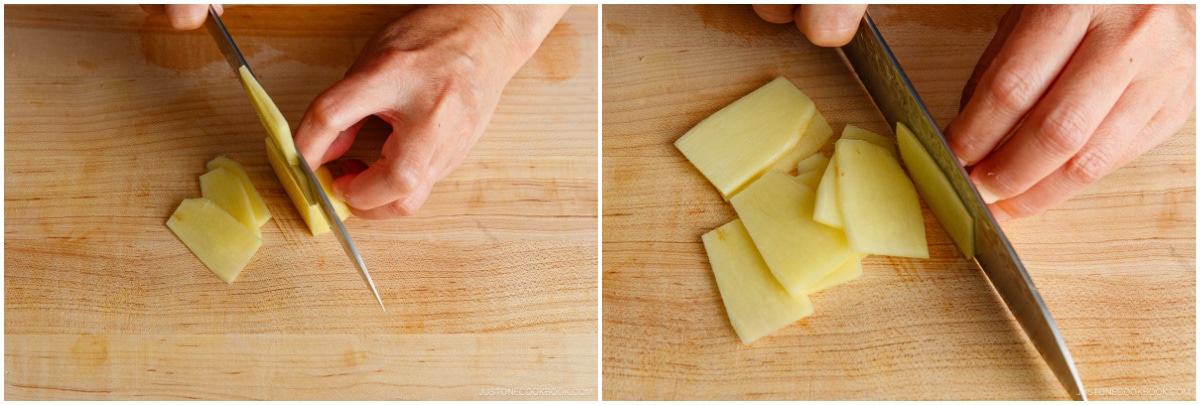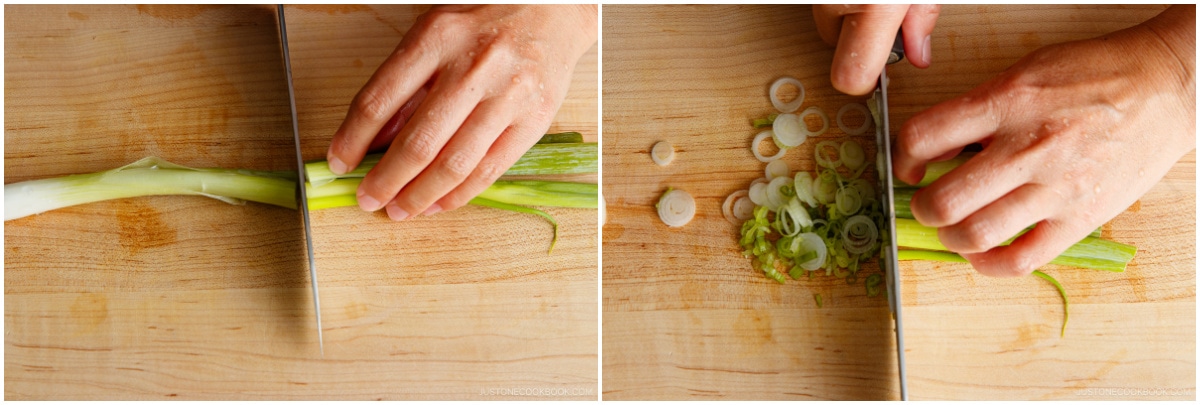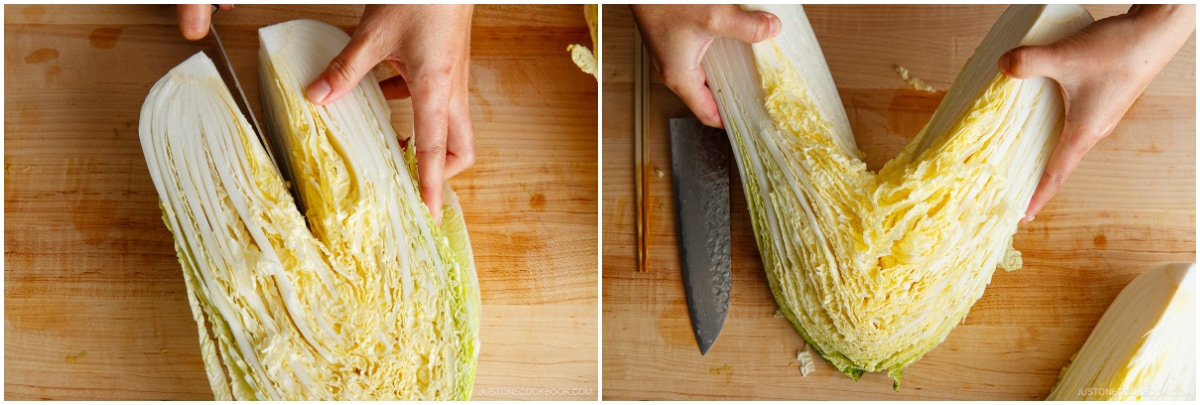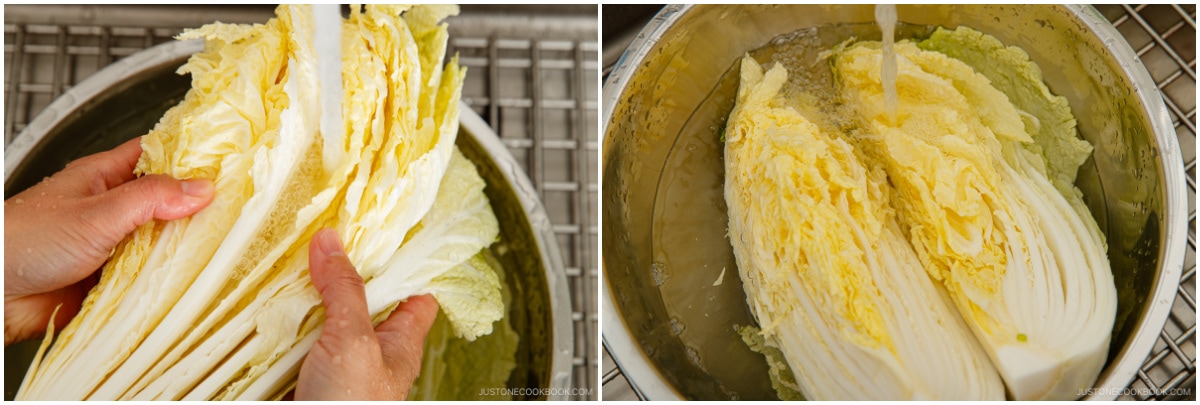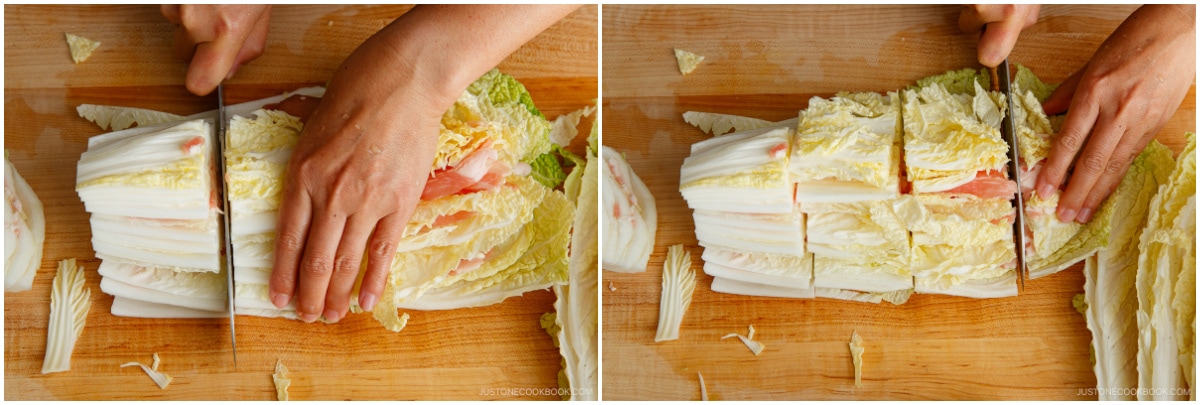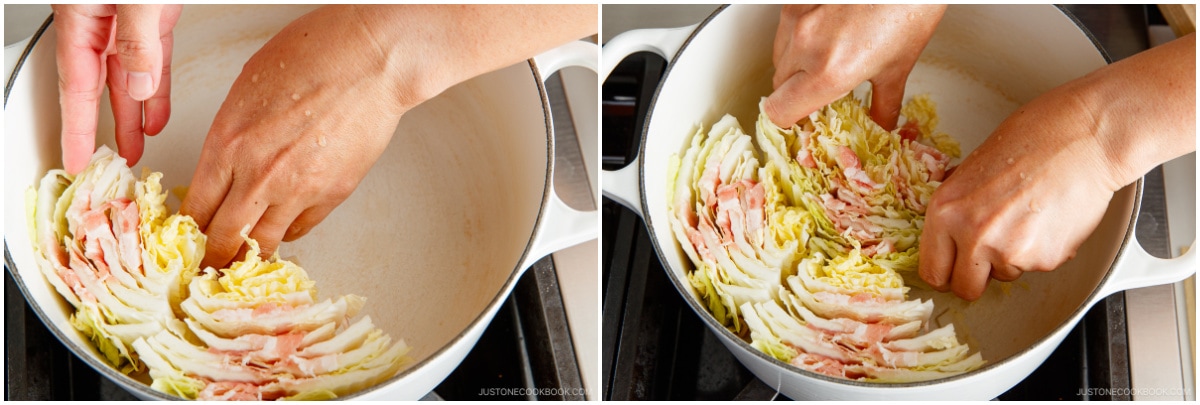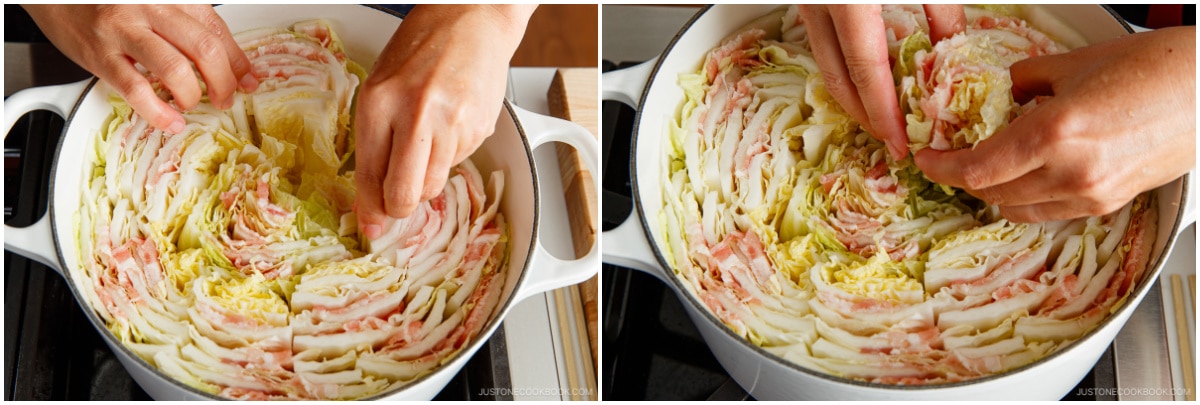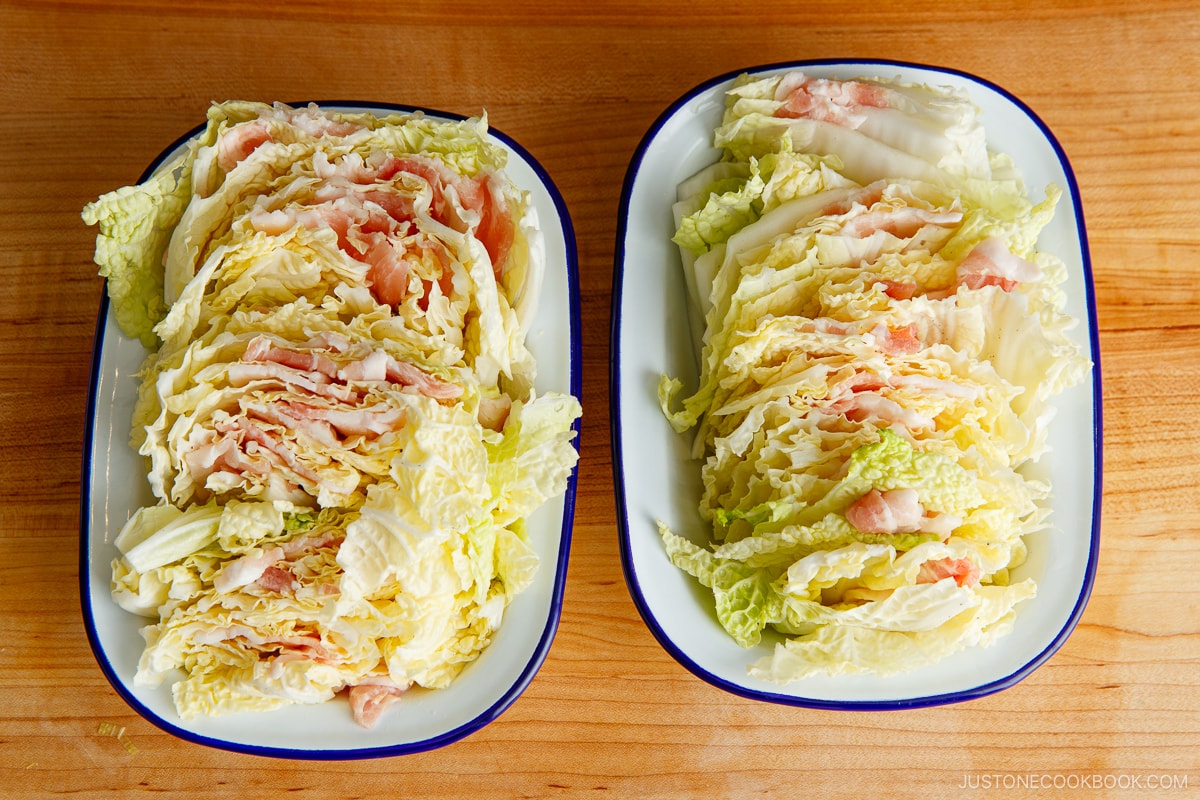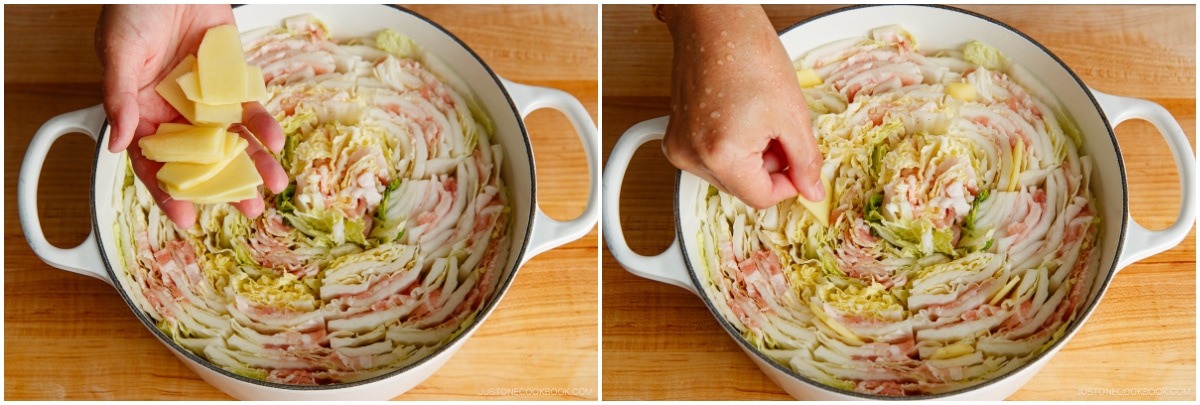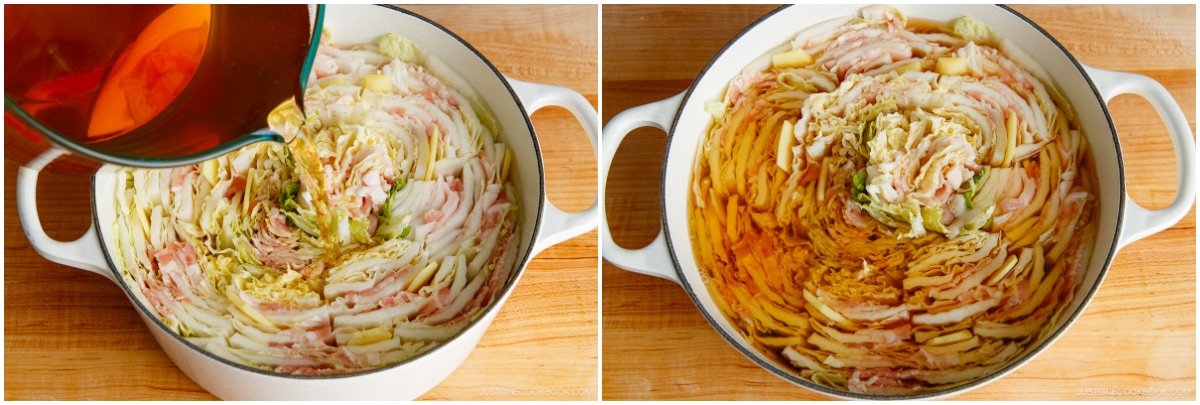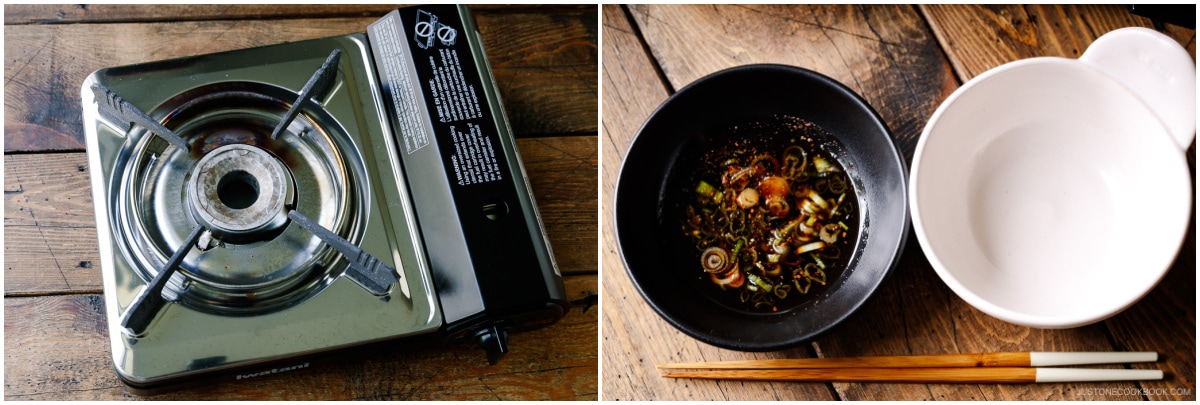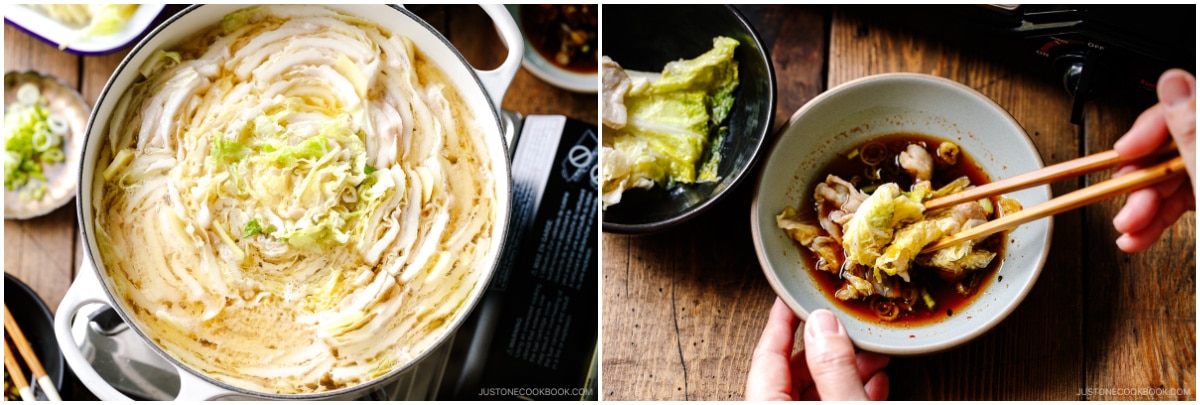Mille-Feuille Nabe (ミルフィーユ鍋, 重ね鍋) is a simple Japanese hot pot that is made with napa cabbage and pork belly slices cooked in a savory dashi broth. Why is the French word “mille-feuille” used in a Japanese dish? Well, let me introduce this easy and delicious hot pot dish to you and explain the story behind the name.
What is Mille-Feuille Nabe?
In French, ‘Mille-feuille’ means ‘a thousand leaves’ and typically refers to the classic French pastry consisting of three layers of thin puff pastry with two layers of cream filling, topped with powdered sugar. This dessert is sometimes also called ‘Napoleon. So, ‘Mille-Feuille’ in this recipe refers to the ‘thousand layers’ of cabbage leaves and pork belly slices, and ‘Nabe’ means a hot pot dish in Japanese. There are about three theories about how ‘Mille-Feuille Nabe’ was introduced to Japan. The recipe first appeared in a cookbook back in 1991, and since then, it has become one of the most popular hot pot recipes enjoyed at home in Japan. Mille-Feuille Nabe is visually appealing, and the best part about this hot pot is that it requires just a few ingredients compared to Shabu Shabu or Sukiyaki, yet it tastes equally delicious! It’s also a great menu option for parties during the cold months. You can prepare everything ahead of time and cook the hot pot right after your guests arrive.
How to Make Mille-Feuille Nabe
The Ingredients You’ll Need
You can create the layers and soup base with any ingredients you prefer, but the basic and authentic Mille-Feuille Nabe always includes napa cabbage and pork belly slices.
Napa cabbage Pork belly slices Ginger Dashi (Japanese soup stock) Seasonings: soy sauce, sake, and salt
Since pork belly is the fattier part of the meat, a simple dashi broth is a perfect match for this dish. The flavors from the meat, napa cabbage, and broth come together beautifully to create an amazing umami flavor. It’s incredible how these simple ingredients can combine to offer such a harmonious taste!
The Cooking Steps
Cooking Tips
The important tips are all related to the assembly of the pot.
Pack the layers tightly! The key to making this nabe is ensuring the layers are tightly packed in the pot. Napa cabbage releases water and shrinks as it cooks, causing the layers to loosen. Therefore, before you start cooking, make sure the layers are tightly packed, preventing the ingredients from moving around. Start by packing from the outer edges of the pot and work your way toward the center. I usually place the thicker cabbage leaves near the pot’s edge and the tender leaves in the center. This arrangement allows you to use a ‘backup plan’ if you run out of napa cabbage before filling the pot. Use one hand to hold the layers in the pot and the other hand to add more layers. Don’t worry if the layers become a bit loose; you can adjust them by bunching them up against each other as you continue to add more.
When Running out of Napa Cabbage
The goal is to fill the pot with layers all the way to the center. However, if you’re making this dish for the first time, estimating the amount of napa cabbage you’ll need can be challenging. For that reason, I recommend having shimeji mushrooms or enoki mushrooms as a backup filler. In case you run out of napa cabbage and pork belly layers, you can use these mushrooms to fill the empty space in the center. Since they have a more neutral taste, they won’t significantly affect the dish’s flavors. Once you become more experienced with making this dish, you can experiment with additional ingredients, but let’s stick with the basics for today.
Ingredient Substitutions
JOC readers who don’t eat pork have tried this recipe with thinly sliced beef and they loved it. Just a quick reminder that beef tends to release more scum as you cook, so be ready to skim off the scum with a fine-mesh sieve. Vegetarian and vegan readers have also tried this recipe with thinly sliced vegetables with Vegan Dashi. I’ve seen the colorful vegetable Mille-Feuille Nabe pictures they shared on social media and it was impressive!
“Shime” – The Finale of the Hot Pot
Toward the end of the hot pot, when most of the ingredients have been consumed, you’re left with the umami-packed soup. Don’t discard it! You can enjoy the remaining soup with one serving of steamed rice or noodles. This final dish is known as ‘shime’ (〆, しめ) in Japanese. Mr. JOC likes adding chuka soba (ramen noodles), but my kids prefer adding udon noodles to the soup. I enjoy adding rice to the soup to make Zosui (Japanese Rice Soup). As the rice absorbs the broth, drizzle in beaten egg, cover, and cook for a few minutes. Season with salt and ground white pepper, and sprinkle with some chopped green onion. It’s simple yet so delicious! Even when you’re full, don’t miss the hot pot’s finale; you can enjoy a small portion at the end. Wish to learn more about Japanese cooking? Sign up for our free newsletter to receive cooking tips & recipe updates! And stay in touch with me on Facebook, Pinterest, YouTube, and Instagram. Editor’s Note: This post was originally published on January 6, 2016. It’s been republished with a new video, new images, and updated content on November 10, 2023.
